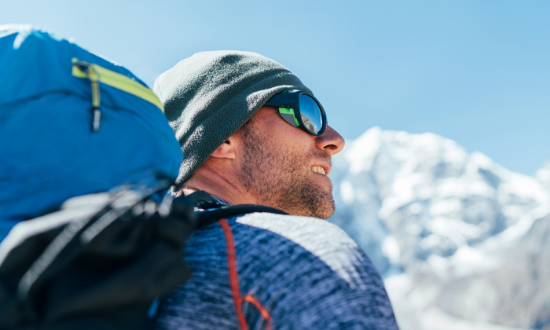The northern part of India is quintessentially beautiful and blessed with snowy peaks of the Himalayas, colorful valleys of Kashmir, silent lakes and crystalline water of rippling rivers, and much more. While drooling over the picturesque of the mountains and valleys, let’s leaf through this guide to correct eyewear for hilly areas.
When you plan for hills you make sure you have the right clothes, boots, and everything to keep yourself warm and comfortable since mostly the weather remains cooler in hilly regions. While all that is unavoidable there is one more thing that you need to add to your travel pack that is your eyewear.
If you are living in plain regions you naturally pick eyewear that suits your daily needs be that spectacles or sunglasses or contact lenses. Understanding the weather of the place is also important before preparing for your trip. You can check weather indexes online prior to purchasing.
Hilly regions being closer to the Sun experience intense rays with cold temperatures. This is because Earth with its gravity keeps the atmosphere closer to its ground. As you go towards higher altitudes there is less atmospheric pressure.
The atmosphere which is made up of several molecules, gases, and vapor is able to hold the heat within it. This means people feel more heat in planar regions.
Although, the same atmosphere acts as a filter for the rays coming from the Sun. UV rays especially the UV A and UV B rays that are successful in entering into the Earth’s atmosphere due to the porosity of the Ozone layer are also absorbed in the atmosphere and thus UV index is less in plain regions.
While in hilly regions due to less atmosphere UV reflectance remain high. The snowy surface is smooth and light reflects from such shiny mediums, making it vital to protect eyes and skin from the damage of UV rays.
UV protectors are especially needed. Exposing the naked eye can impose a serious threat to your vision. Commonly experienced by mountaineers is a condition called snow blindness or photokeratitis. In this condition, you lose your central vision and you may experience temporary vision loss for a few months. Although it can be cured with treatment. If its effects are severe it may conclude in permanent loss of vision.
To prevent any of these here is what you need.
UV protective sunglasses: UV protective lenses are made using different methods.
- Imbibing method: In which UV solution is added in the lens-making solution hence it gets distributed equally.
- Dipping Method: The lens is dipped in the UV solution. These lenses also are 100% UV blockers.
- Spray Method: A UV solution is sprayed on the front and the back surface of the lens.
Most good quality sunglasses carry polycarbonate lenses which are by default UV protectors. So, it is important to opt for quality eyewear.
Polarized Sunglasses

Polarize sunglasses are also the best UV protectors with the added benefit of glare reduction. Glaring hinders your vision while you can’t get enough of the beauty surrounding you on hills. The horizontal blocks cut the glare and enhance the sharpness of your vision.
Mirror Coats

Mirror coats have a lot of added benefits apart from their appealing fashion. The shiny surface reflects back rays that help in glare reduction. Not all ready-to-wear sunglasses do not carry mirror coat lenses.
You can ask your optician to customize your lenses with your preferred color of mirror coat. A mirror coat on polarized lenses is optimum for glare-free and UV-protected vision.
Contact Lenses
Even contact lens by Cooper vision provides protection from UV A and UV B rays. Whether you are Myopic, astigmatic, or presbyopic, you can wear a respective range of contact lenses by Cooper vision to protect your eyes.
While this sorts the UV problem, glaring on hills still remains. Most important is UV protection with that sorted you can wear polarized sunglasses on top to reduce glaring.
Color of lens
But not all colors are capable of blocking the glare. You might feel blinded due to direct sunlight on heights which is why your eyewear should be able to counter that.
We mostly think wearing a dark grey or black will reduce glare but you would rather need colors such as red or amber to reduce glare. Different colors have different properties. While a red or pink color specializes in glare reduction, brown or amber color is good to go for any weather. You can ask your local optician to get lenses top-coated with a UV protective solution.
Sportswear

These are designed for the need of the hour. They are mostly high in curvature hence covering your eye. This secures the eyes from the sides as well. These are default UV protectors and are designed to give the utmost clear and enhanced vision.
In final words, the climate differs based on geography it is best suggested to pick eyewear that promises protection and not just fashion.








